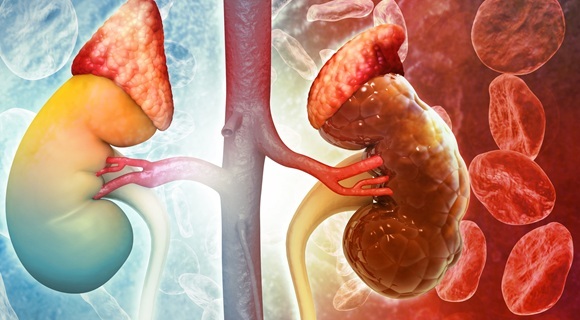Genetic Mutation Appears to Drive Rare Brain Cancer
By LabMedica International staff writers
Posted on 27 Jan 2014
A gene mutation associated with several types of cancer may also be responsible for a rare but debilitating brain tumor called papillary craniopharyngioma.Posted on 27 Jan 2014
Craniopharyngiomas arise at the base of the skull adjacent to the pituitary gland, the hypothalamus, and other critical brain structures and although they are not inherently aggressive tumors, because of their location they can significantly compromise vision and other neurologic and endocrine functions.

Image: Histopathology of papillary craniopharyngioma (Photo courtesy of Jensflorian).
Scientists from Massachusetts General Hospital (Boston, MA, USA) and their collaborators from other institutions extracted DNA from tissue shavings of frozen tissue or 1 mm core-punch biopsies from formalin-fixed paraffin-embedded tissue and from buffy coat preparations of paired blood using standard techniques. Whole-exome sequencing was performed and analyzed on a HiSeq 2500 system (Illumina Inc., San Diego, CA, USA).
The team first performed whole exome sequencing of 12 adamantinomatous and 3 papillary craniopharyngiomas. Among adamantinomatous tumors previously identified, they found a Catenin (Cadherin-Associated Protein), Beta 1, 88 kDa, (CTNNB1) mutation in 11 of the 12 samples; and for the first time, the known tumor-associated v-raf murine sarcoma viral oncogene homolog B (BRAF) mutation was identified in all three papillary tumors.
The scientists followed that finding with a targeted genotyping of tumor samples from an additional 95 patients. Among tested papillary tumors, 94% had the BRAF mutation, while 96% of the adamantinomatous tumors had the CTNNB1 mutation. The investigators also confirmed that both types of tumors had very few other mutations and that the BRAF or CTNNB1 mutations were present in all tumor cells, suggesting they occurred early in tumor development.
Priscilla Brastianos, MD, co-corresponding author of the study said, “We were delighted to find that the same BRAF mutation previously described in melanomas and other brain tumors appears to be driving the growth of these tumors. BRAF inhibitors have shown great promise in treating patients with other tumors with this mutation, and we hope to quickly evaluate these drugs in patients with papillary craniopharyngioma in hopes of reducing the serious consequences of this disease.” The study was published on January 12, 2014, in the journal Nature Genetics.
Related Links:
Massachusetts General Hospital
Illumina














